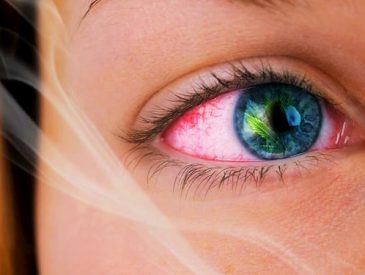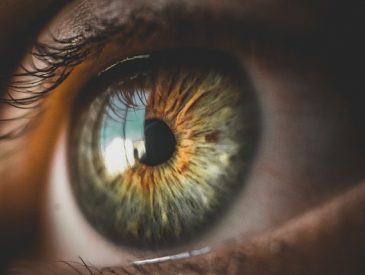Understanding how our eyes grow and develop is crucial, even though it’s not the most popular subject to talk about when it comes to aging and physical health. Do you know that our eyes are approximately two-thirds smaller at birth than they will be as adults? It’s true, and realizing this will make it easier for you to look after your eyes in the future.
Continue reading to find out how the eyes change and grow from birth to late adulthood.
Table of Contents
Do Eyes Grow?
Babies are adorable because of their tiny frames and large eyes. Our eyes are roughly two-thirds smaller at birth than they will be as adults.
In particular, during the first two years of life and during adolescent puberty, our eyes grow throughout our lifetime. Our eyes will continue to change in various ways for the rest of our lives.
Do Eyeballs Grow?
Eyes measure approximately 16.5 millimeters in length when a baby is born. By the time a person is 20 or 21, their eyes have reached a length of about 24 millimeters, and they no longer continue to grow.
Over time, the lenses of the eyes get heavier and heavier. Eyes grow quickly after birth, according to scientists. Then, after a few months, the growth becomes linear, and over the course of a lifetime, the lenses gain 1.38 milligrams of weight on average.
How Your Eyes Change over the Years
When you are in your early 20s, your eyes and vision are completely developed. Through your 30s, they typically remain the same.
Your eyes change as you get older. Most of them have to do with your vision. The first symptoms of aging are frequently vision issues. Over time, changes may occur gradually.

Changes in Eye Function
It’s more likely that vision-related changes in your eyes as you age. You might notice:
Farsightedness, or presbyopia
Your lenses become less flexible once you reach the age of 40. Presbyopia, which makes it more difficult to focus on nearby objects, can result from that. When reading or using a computer, you might notice it. It might be necessary for you to read from a distance. Or, if you wear glasses for distance vision, you might need to take them off to see something clearly up close.
Between the ages of 41 and 60, presbyopia is the most prevalent eye condition. Over time, it typically gets worse. Your vision can be corrected, which will improve your vision, with reading glasses or bifocal lenses.
Changes with light
Your eye’s lens gets denser as you get older. A smaller amount of light passes through to the back of your eye. As a result, it might be more difficult to see in low light. If the lighting is poor, you might find it challenging to read a book or the menu at a restaurant. With age, it gets worse. If you were in your 20s, you might require three times as much light as you do in your 60s.
Your pupils may become smaller as you reach your 60s, and the muscles that regulate their size may become weaker. Going from a bright room to a dark one can be challenging for them because they adjust to light and darkness more slowly. When you go outside or drive at night, you might notice that things appear dimmer or more reflective.
Color changes, depth perception, and floaters
Color perception may alter as you get older. They could appear less contrasty or bright. It becomes more difficult to perceive depth. Additionally, you might detect more floaters, or floating black spots. Floaters typically don’t interfere with your vision.
Dry eyes
As you age, you produce less mucous and less tears. Less fluid may cause dry eyes since tears keep the surface of your eyes moist.
Changes in the Way Your Eyes Look
As you get older and middle-aged, your eyes might change in appearance. Physical changes may include:
- Your eyes may roll backwards or forwards.
- You can’t see very far to your sides because your eyes appear puffy.
- Your lower eyelids twitch inward.
- Your eyelids droop.
- Due to exposure to factors such as UV light, wind, and dust, your eyes appear yellow or brown.
- Your eye’s color or pigment has changed, and you can tell.
- Calcium and cholesterol salts cause a grayish-white ring to form around the edge of your cornea.
Eye Abnormality and Genetic Disorders
Before the age of 21, our eyes experience the bulk of their growth and development. As a result, eye abnormalities and genetic disorders typically manifest in childhood and adolescence. The most common eye disorders include the following:
- Nearsightedness- Most people with this condition, also known as myopia, are between the ages of 8 and 12. When the eyes are not formed properly, myopia develops. The cornea becomes overly rounded, which is typically the cause of this. Because the eyes focus light in front of them rather than on the retina, people with myopia have trouble seeing distant objects.
- Farsightedness- Also called hyperopia, this condition is caused when the cornea doesn’t develop enough roundness. Alternatively, the eyeball itself may not develop normally. Focusing on things in front of the eyes causes farsightedness.
- Color blindness- When color-sensing pigments in the eyes don’t develop properly, colorblindness results. Either a mild or severe condition could exist. The ability to distinguish between the colors red and green is occasionally weakly impaired. The eyes, however, are unable to distinguish any color other than gray and white in more extreme cases. Surprisingly, men are more likely than women to develop colorblindness. This is due to the significant effects that gender has on vision.
- Apart from these three frequently occurring eye development disorders, other issues like lazy eye, astigmatism, and refractive errors can also arise during childhood and adolescence.
How Eyes Age: Adult/Late Life
Our eyes start to age at the age of 40, just like other parts of the human body do. Additionally, even though the length of the eyes has stopped growing, their weight is still rising, which can cause vision changes as people age. The capacity to see at night and tear production are two vision-related factors that can be impacted by aging eyes. Additionally, some individuals may start to lose some of their vision in certain areas of their eyes during this age, as well as develop flashes and floaters.
Of course, vision issues can also be brought on by eye diseases. For instance, color blindness, macular degeneration, and blurred vision can be caused by diabetes and Alzheimer’s disease.
Start Taking Care of Your Eyes Today
The good news is that many of the eye conditions mentioned above can be treated before they worsen. For instance, nearsightedness and farsightedness can be treated with glasses, contacts, or laser eye surgery. Generally speaking, the most important thing to remember is that healthy eyes are less likely to experience abnormalities and issues. Plan an eye exam at least once a year to ensure that your eyes are in excellent condition for many years to come.
Looking Glass Optical is available to assist you when you require eye care at any stage of your life.





